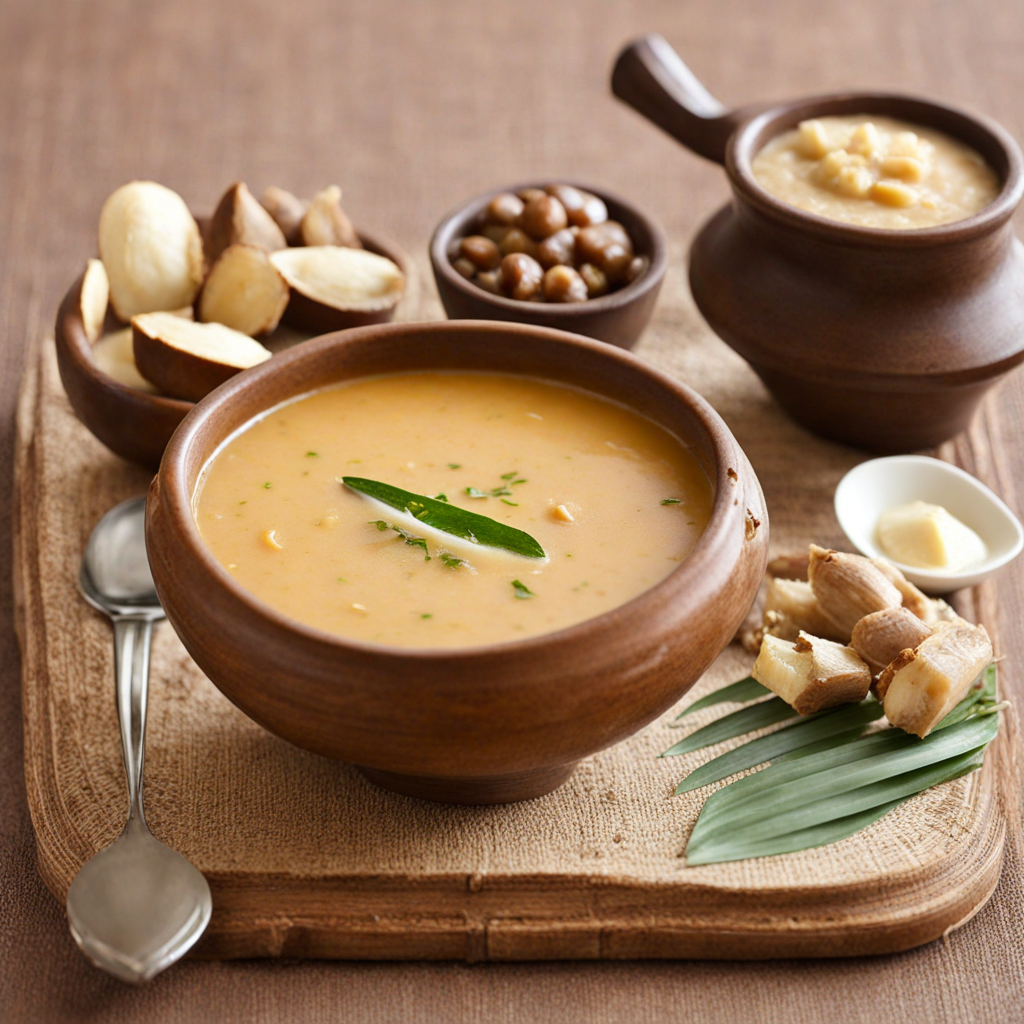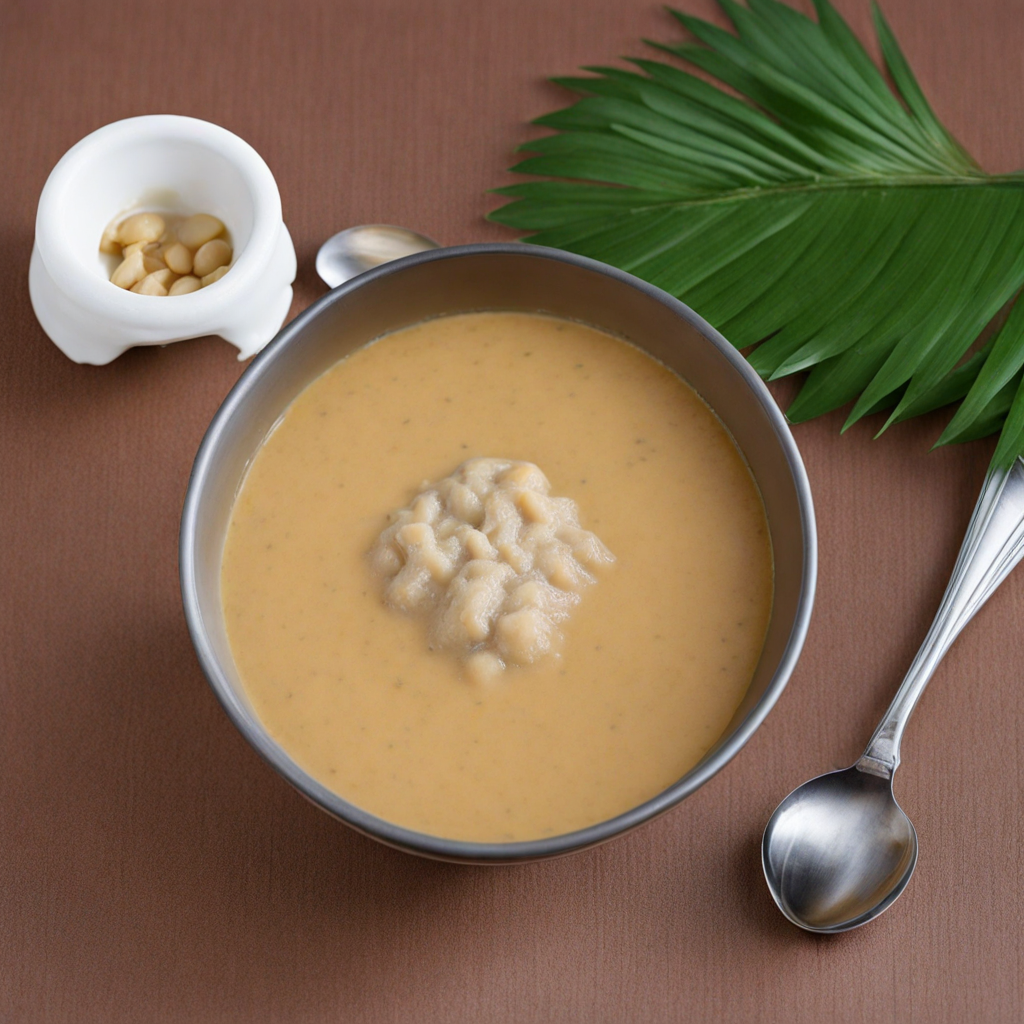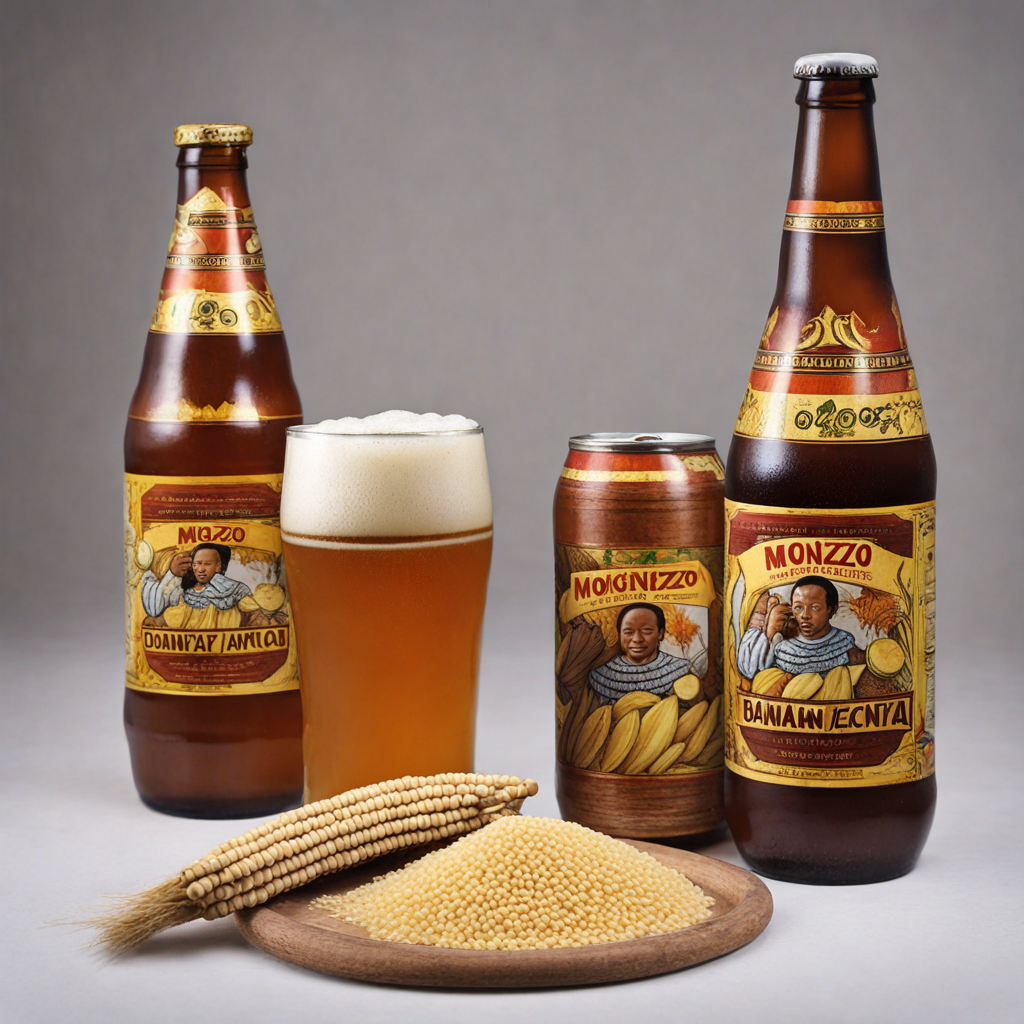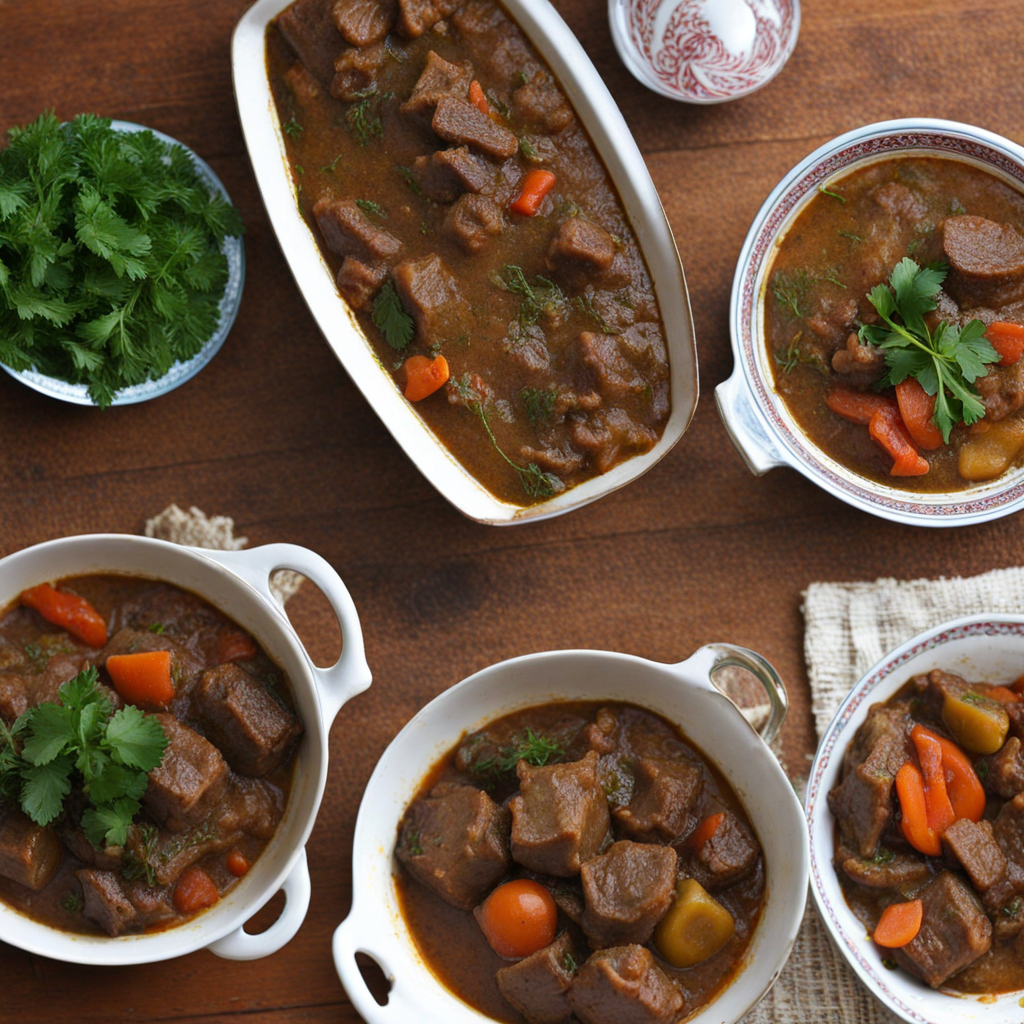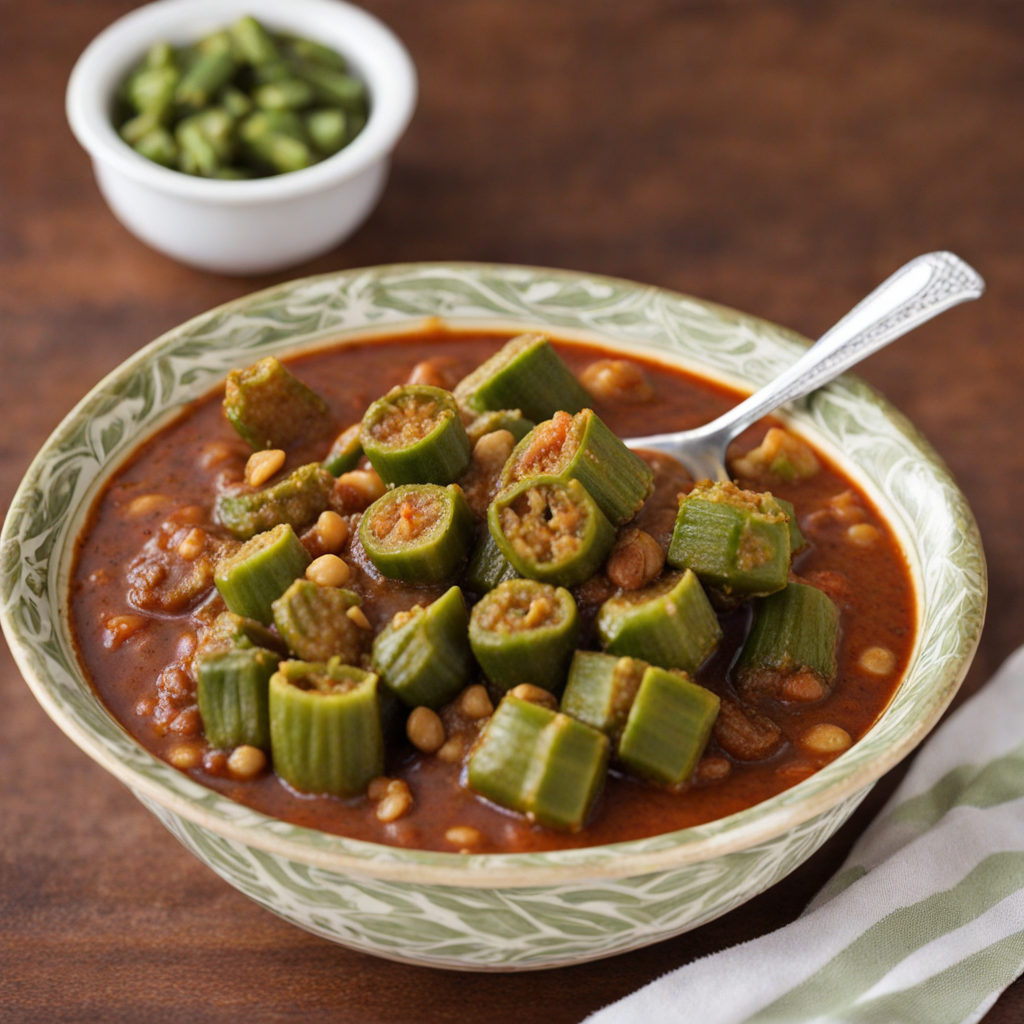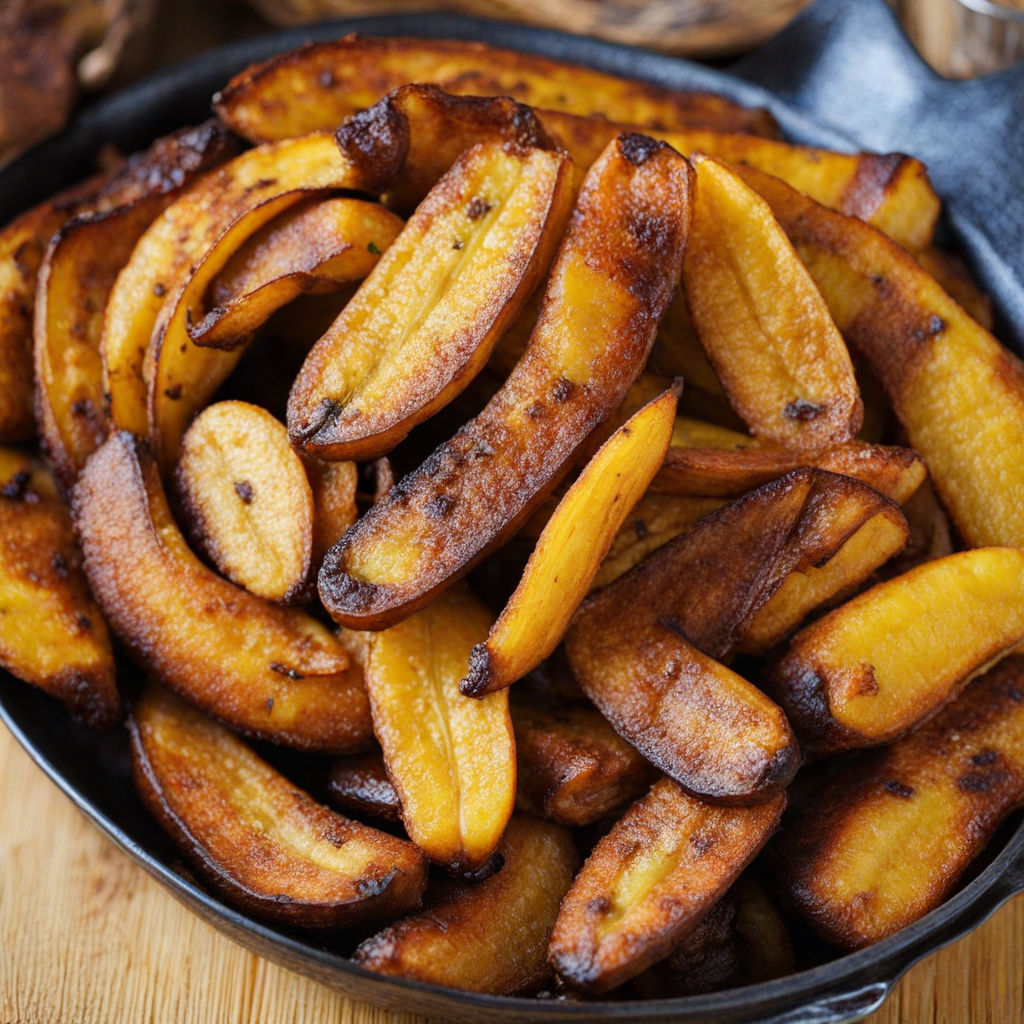Palm Butter Soup
Palm Butter Soup is a rich and flavorful dish that embodies the heart of Central African cuisine. This soup is primarily made from palm oil, which gives it a distinct, earthy flavor that sets it apart from other soups. The base is often enhanced with a variety of ingredients, including groundnuts (peanuts), local greens, and meats such as chicken or fish, creating a hearty and satisfying meal. The combination of these ingredients brings a depth of flavor that is both comforting and unique, making it a favorite among locals. The preparation of Palm Butter Soup involves simmering the palm oil with a mixture of spices and vegetables, allowing the flavors to meld beautifully. The soup is typically thickened with groundnuts, which add a nutty richness, and is often served with a side of fufu or rice to soak up the delicious broth. The vibrant color of the soup, a deep orange-red, is visually appealing and hints at the robust flavor profile that awaits. Each spoonful is a warm embrace, showcasing the essence of traditional Central African cooking. Enjoying Palm Butter Soup is not just about satisfying hunger; it’s an experience that invites you to explore the culinary traditions of the Central African Republic. The communal aspect of sharing this dish with family and friends further enhances its charm, as it symbolizes togetherness and the joy of good food. With its unique taste and comforting nature, Palm Butter Soup is a delightful dish that promises to take your palate on an unforgettable journey into the flavors of Central Africa.
How It Became This Dish
Soupe de Beurre de Palme: A Culinary Journey through the Central African Republic #### Origin and Ingredients Soupe de Beurre de Palme, or Palm Nut Soup, is a traditional dish from the Central African Republic (CAR), a nation rich in biodiversity and cultural heritage. The soup’s primary ingredient, palm nut (or palm fruit), is derived from the oil palm tree (Elaeis guineensis), which is native to West Africa but has spread throughout the tropical regions of Africa. The oil palm tree thrives in the humid, tropical climate of CAR, making it an integral part of the local agriculture and sustenance. Historically, the palm tree has been revered not just for its nutritional value but for its multifaceted use; nearly every part of the tree has utility, from the fruits to the fronds. The palm nuts are harvested and processed to extract a rich, red oil, known as palm oil, which is a staple in many African cuisines. The flesh of the palm nut is also cooked down to create a flavorful base for soups and stews. Other common ingredients in Soupe de Beurre de Palme include fresh vegetables, such as okra, tomatoes, and onions, as well as spices like chili peppers that add depth and heat to the dish. #### Cultural Significance In the Central African Republic, Soupe de Beurre de Palme is more than just a dish; it is a representation of community, tradition, and resilience. The preparation and sharing of this soup is often a communal activity that reflects the importance of social bonds in Central African societies. Families gather to prepare meals together, often led by the matriarch, who imparts age-old techniques and recipes to younger generations. The soup is especially significant during communal gatherings, celebrations, and religious festivals. In many Central African cultures, food plays a pivotal role in rituals and ceremonies, serving as a vehicle for cultural expression and identity. Soupe de Beurre de Palme acts as a bridge between generations, preserving ancestral links while also adapting to contemporary tastes and ingredients. #### Development Over Time The culinary history of Soupe de Beurre de Palme reflects the broader socio-economic and political developments within the Central African Republic. As colonization and globalization began to influence local diets, the foundational elements of traditional recipes began to evolve. While the core ingredients of palm nuts and local vegetables remained, the introduction of new spices, meats, and cooking techniques enriched the dish. For instance, during the colonial period, French culinary influences began to permeate the local cuisine, bringing with them new flavors and presentation styles. In recent decades, the Central African Republic has faced numerous challenges, including political instability and economic hardships. Despite these adversities, the resilience of the populace is palpable in their culinary traditions. Soupe de Beurre de Palme has adapted to the realities of scarcity, leading to innovative variations that incorporate locally available ingredients. In times of hardship, the soup has remained a vital source of nourishment, sustaining families and communities through tough times. Moreover, the globalization of food culture has introduced new ideas and practices to Soupe de Beurre de Palme. As Central Africans migrate to urban centers or abroad, they carry with them their culinary heritage. This has led to the emergence of modern interpretations of traditional dishes, often blending them with international flavors. In restaurants or homes where traditional recipes are prepared, one might find the soup served with a contemporary twist, such as the addition of grilled meats or served alongside rice, reflecting both a respect for tradition and an openness to innovation. #### The Modern Context In the modern context, there has been a renewed interest in traditional foods like Soupe de Beurre de Palme among younger generations and chefs who seek to celebrate their heritage. This resurgence is partly driven by a global movement towards sustainable and locally-sourced ingredients, as well as a growing appreciation for the nutritional value of traditional African foods. Social media platforms have played a crucial role in this revival, allowing individuals to share recipes and cooking techniques, thus fostering a sense of community among those who cherish their culinary roots. Cooking shows and food bloggers often highlight Central African cuisine, including Soupe de Beurre de Palme, bringing it to the attention of broader audiences. This exposure not only helps preserve the dish but also encourages culinary tourism, inviting food enthusiasts to explore CAR’s rich gastronomic landscape. #### Conclusion: A Legacy of Resilience Soupe de Beurre de Palme is more than just a culinary dish; it is a testament to the culture, history, and resilience of the Central African Republic. Its ingredients tell the story of the land and its people, while its preparation and consumption reflect deep-rooted communal ties. As the dish continues to evolve in response to changing times, it serves as a reminder of the importance of preserving culinary heritage while embracing innovation. In a world that increasingly values authenticity and sustainability, Soupe de Beurre de Palme stands proud, embodying the spirit of the Central African Republic and its people. This soup is not just food; it is a narrative of survival, identity, and community, one bowl at a time.
You may like
Discover local flavors from Central African Republic


